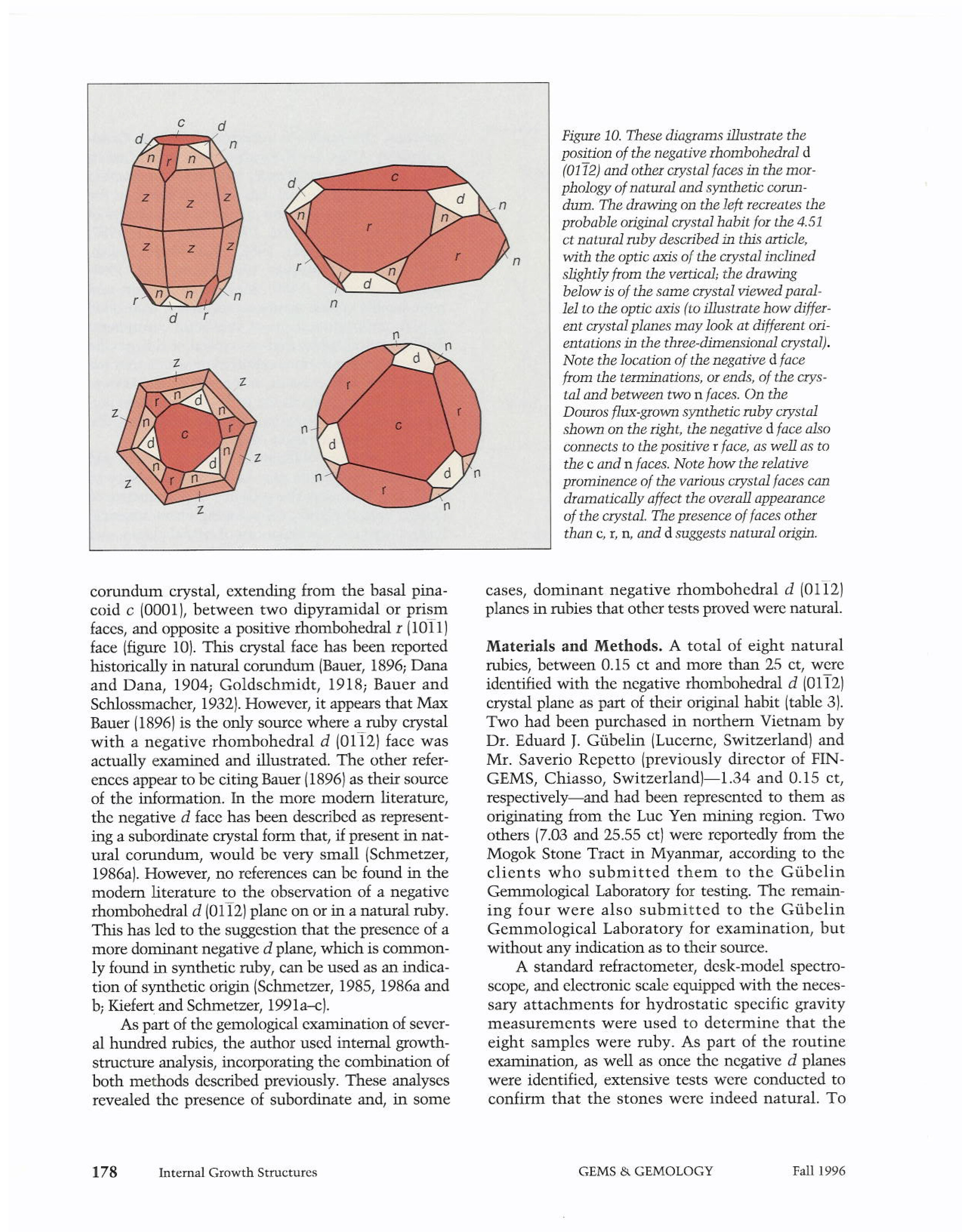Introduction to Analyzing Internal Growth Structures
Photomicrograph by C.P. Smith; Immersion, magnified 15x.
One of the most obvious ways to identify sharpened growth structures is through color zones, or bands, the thickness of which may fluctuate between consecutive periods of crystal growth. Shown here are broad blue color bands alternating with narrow color-less bands, parallel to dipyramidal v (4483) planes, in a sapphire from Kashmir. The vertical growth planes are at 15.4 degrees from the optic axis direction, and the angle created at the junction of the v-v planes is 123 degrees.
This research was published in Gems & Gemology in the fall of 1996.
To download a copy click here
















